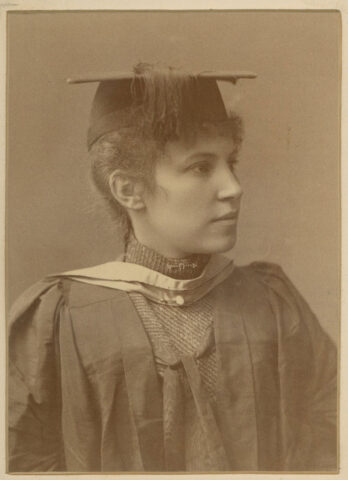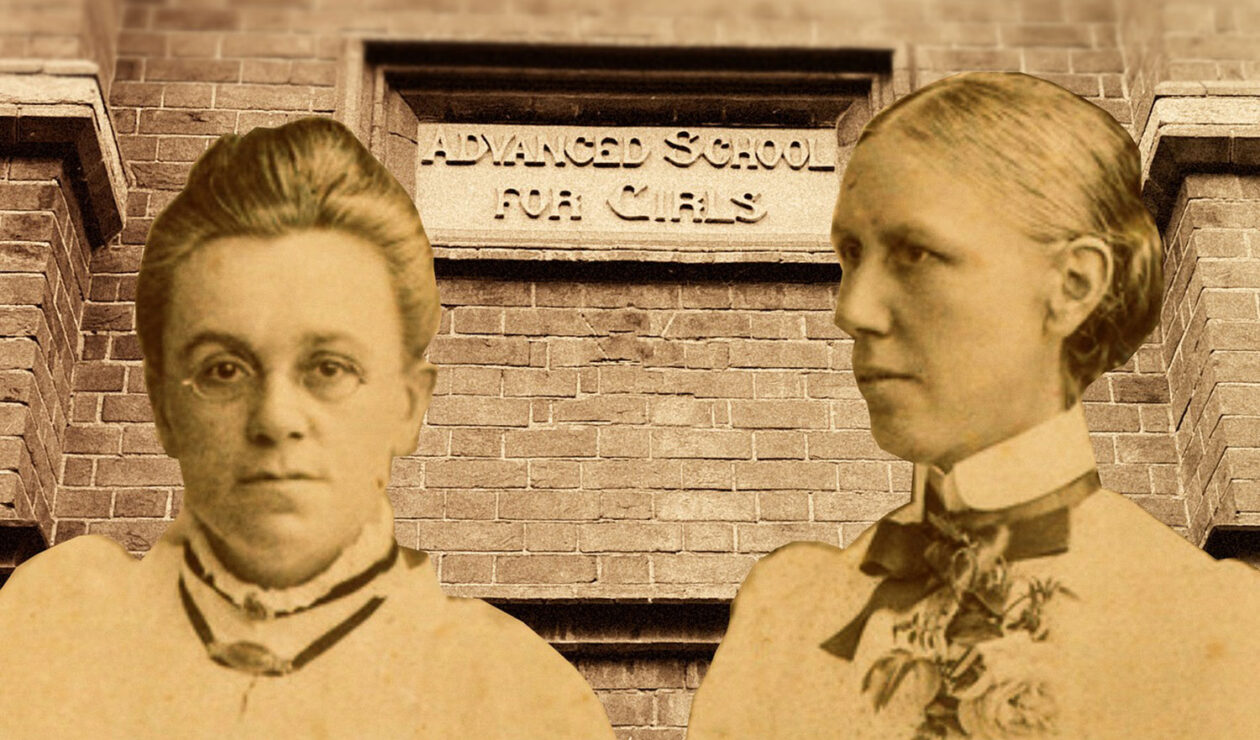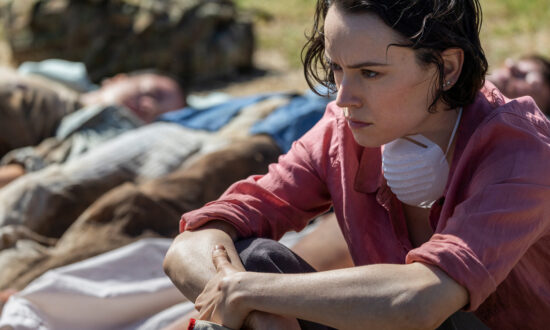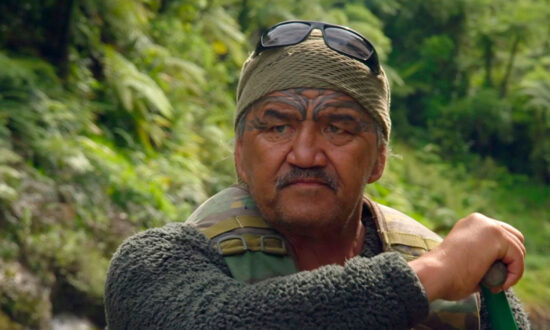Female “accomplishments” such as needlework were a key emphasis in the education of young middle-class women in the 19th century. Why would girls need to study subjects like maths or science in a society where their primary ambitions were supposed to be marriage and children?
When the University of Adelaide opened in 1874, however, it wanted to open its degree courses to women.
Its first application to the Crown to admit women was knocked back, says filmmaker Rob George, explaining that a major hurdle was the fact there was no high school for girls.
“There were various types of schools during that period, and middle-class girls went to what were called ‘dame schools’, which taught music and perhaps French and sewing and ‘female accomplishments’ – accomplishments was a formal term that was used. But that wasn’t good enough for girls to go to university, where they needed Latin and Greek and also other academic subjects.”
Enter the Advanced School for Girls, which was made possible by the passing of the 1875 Education Act and became the first public high school (for girls or boys) not just in the state, but in Australia. It opened with a small number of students in a converted house in Franklin Street in 1879, before moving to a new purpose-built building in Grote Street in 1891. The University of Adelaide was permitted to admit women to all its degree courses from 1881.
The so-called female accomplishments were not part of the Advanced School’s curriculum, says George.
“It had a very disciplined academic focus to it in order for girls to get to the level to they needed to get to [for acceptance into university]. And there were a lot that achieved very high standards.”
George, co-director of Prospect Productions, has a keen interest in Adelaide’s past and has premiered two documentaries at past SA History Festivals: the first, Von Loves Her Modernist, was about poet and publisher Max Harris and his wife Von, followed by The Many Loves of Geoffrey Dutton. His new film – Madge and Bibs and the Advancing Girls – is showing during this year’s festival and is about the Advanced School for Girls and his great-great aunts, former school headmistress Madeline Rees George (known as Madge) and teacher Marian Rees George (Bibs).
“I’m really using Madeline and Marian as the conduits into telling the story of the Advanced School for Girls and that then leads to the story of Adelaide University accepting women and that in turn leads to South Australia being the first place in the world to let women have the vote and to stand for parliament, so it’s quite an interesting progression,” George says.
“The impact that the school had on South Australia is quite significant.”

Madeline Rees George (bottom row, second from left) and her sister Marian (bottom, far left) in a circa-1890 photo of staff at the Advanced School for Girls. Photo: SLSA / B 25677/4
Madeline was originally employed as the Advanced School’s German teacher and then became its third headmistress, a role she held for 22 years and retained for a further six years after it morphed into Adelaide High School in 1908. Her younger sister Marian was French teacher at both schools.
Rob George says the two sisters were raised in London and then went to Germany, where they worked as teachers/governesses before coming to Australia in 1875. Their widowed mother Nancy was already settled in Adelaide, and it is a collection of her letters that helped pique his interest in their story.
“When I was growing up, my father was a bank manager so we moved around a lot, but we always took with us this old box which had a pile of old letters and some diaries in it,” he says.
“The diaries were from Frank Rees George [Nancy’s son], who was the builder of the bridge at Murray Bridge… and there were also about 200 letters [from around 1870-1875] from the family, mostly from Nancy to her sons…
“A lot of the letters, as you can imagine, were pretty boring. They were also difficult to read because they were cursive and in ink, but some of them refer to Madge and Bibs… there was quite a lot of discussion about how we’re going to get them out [from Germany] and what we can do to help them when they come here…”
Madge and Bibs and the Advancing Girls tells the story of the Advanced School for Girls though dramatised recreations of these family letters and Madge’s newspaper interviews, as well as actual interviews with contemporary historians such as Professor Alison Mackinnon, Dr Susan Marsden and Dr Kiera Lindsey. It also includes an interview with the Governor of South Australia, Frances Adamson, whose aunt, Helen Jones, was a historian of this period of women’s education.

The film shoot for Madge and Bibs, with Patrick Frost as a reporter from The Register, Maureen Sherlock (standing) as Marian and Kathryn Fisher as Madeline. Photo: supplied
George says although Nancy had only come to Australia in 1869, she was apparently very well connected, with one of her letters referring to a “Mrs Farr” (Julia Farr), who was interested in Madge becoming her governess.
“So it’s interesting the little networks that were there behind the scenes, which is something that Kiera Lindsey picks up on – that the women had these informal networks that were quite influential and powerful. The men were having their meetings in the Adelaide Club or whatever but the women had a different way of dealing with the issues they needed to deal with.”
Madeline and Marian continued to live together and forge independent lives after arriving in Adelaide, with neither woman marrying or having children.

Former Advanced School for Girls student Edith Dornwell. Photo: SLSA / B 25677/38
Together with other notable campaigners, says George, they helped revolutionise girls’ education in South Australia, “generating an influential cohort of female medicos and educationists who, among other achievements, played a significant role in women gaining the vote in 1894, along with the right to stand for parliament”.
While the opportunity to study at the Advanced School for Girls would have been available to a limited cohort of young women, its students achieved some impressive outcomes – including Edith Dornwell, who became the first female graduate at the University of Adelaide and Australia’s first Bachelor of Science.
Another early graduate of the Advanced School was Helen Mayo, who was the university’s second female graduate in medicine and went on to become a prominent medical practitioner and campaigner. Dr Mayo – who shared a North Adelaide house with her partner Dr Constance Finlayson and a “Miss Gertrude Young” – co-founded the School for Mothers (later the Mothers’ and Babies’ Health Association) and the Mareeba Hospital for infants.
George says one of the things that surprised him during his research was how different South Australia’s social demographic was from that of the other states or colonies.
“We had an equal balance of males and females right from day one, and the women of South Australia had a significant role to play pretty much right from day one. So women’s suffrage didn’t just come out of nowhere – it came out of the society that was very progressive, extremely progressive, and extremely supportive of particularly middle-class women’s ambitions.”

Get InReview in your inbox – free each Saturday. Local arts and culture – covered.
Thanks for signing up to the InReview newsletter.
Madge & Bibs and the Advancing Girls will screen in the Hetzel Room at the State Library of South Australia on May 8 and 10, and at the Domain Theatre in Oaklands Park on May 24. Full details on the History Festival website.

The Advanced School for Girls, circa 1930. The building, west of the Central Market on Grote Street, still stands today.
Support local arts journalism
Your support will help us continue the important work of InReview in publishing free professional journalism that celebrates, interrogates and amplifies arts and culture in South Australia.
Donate Here




